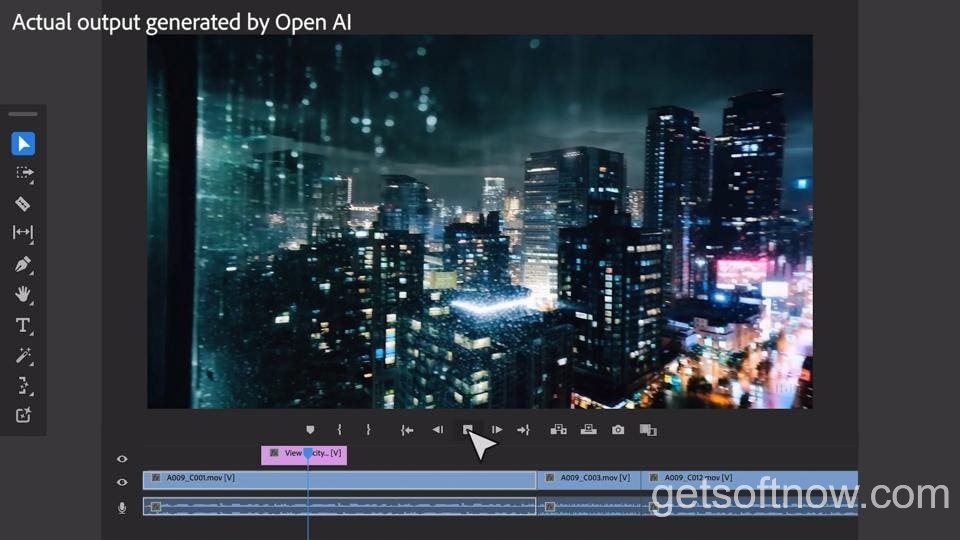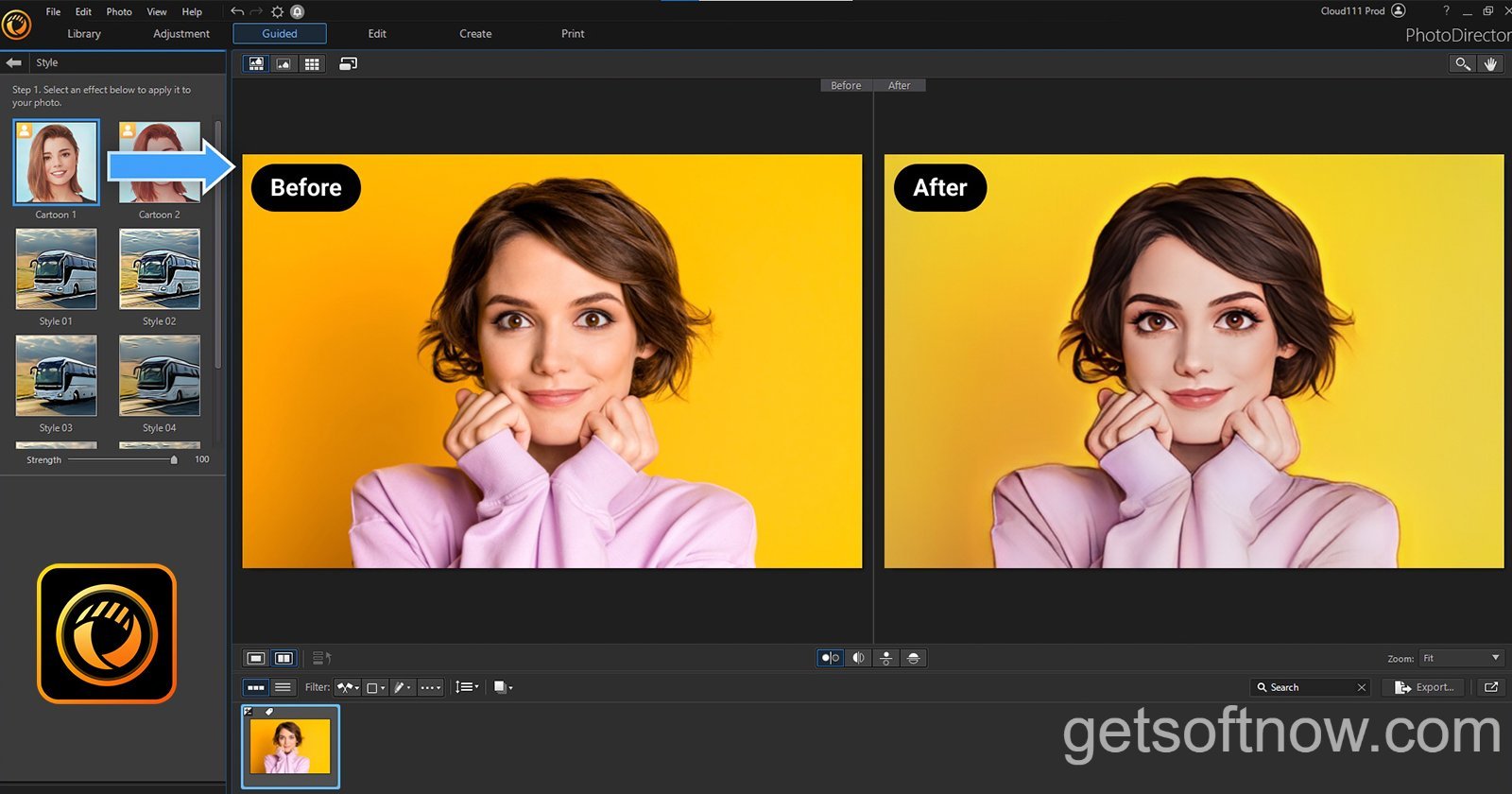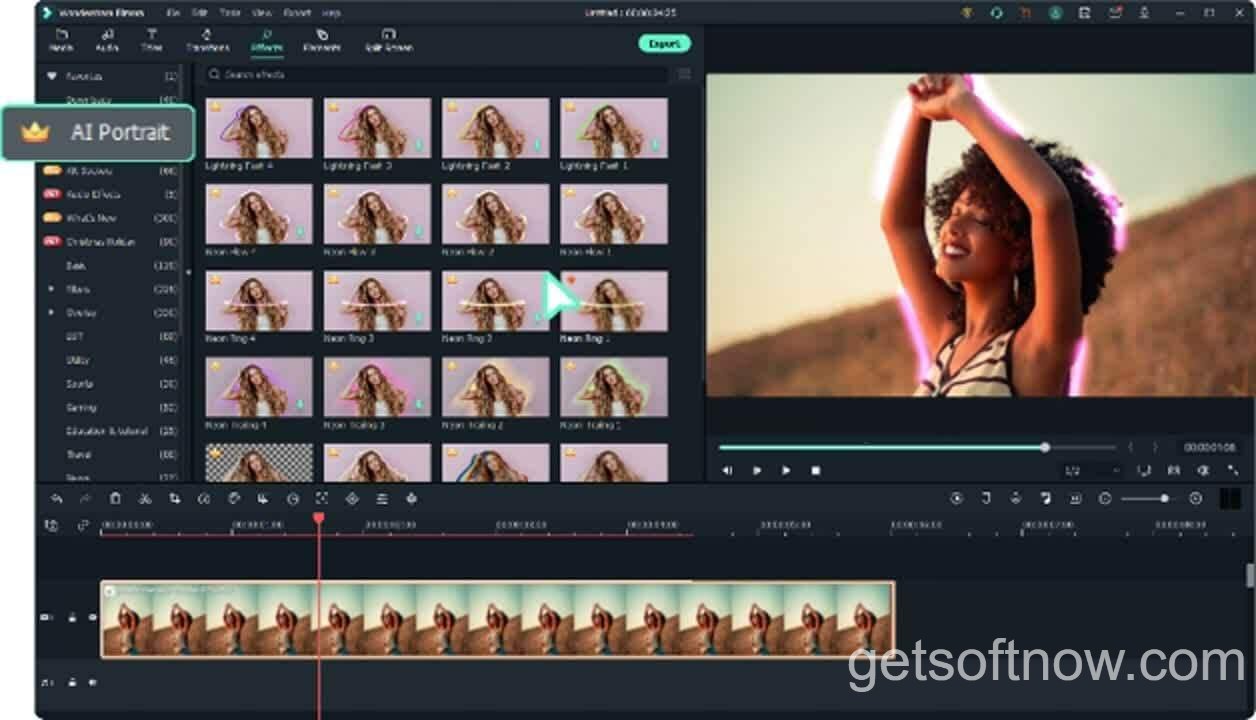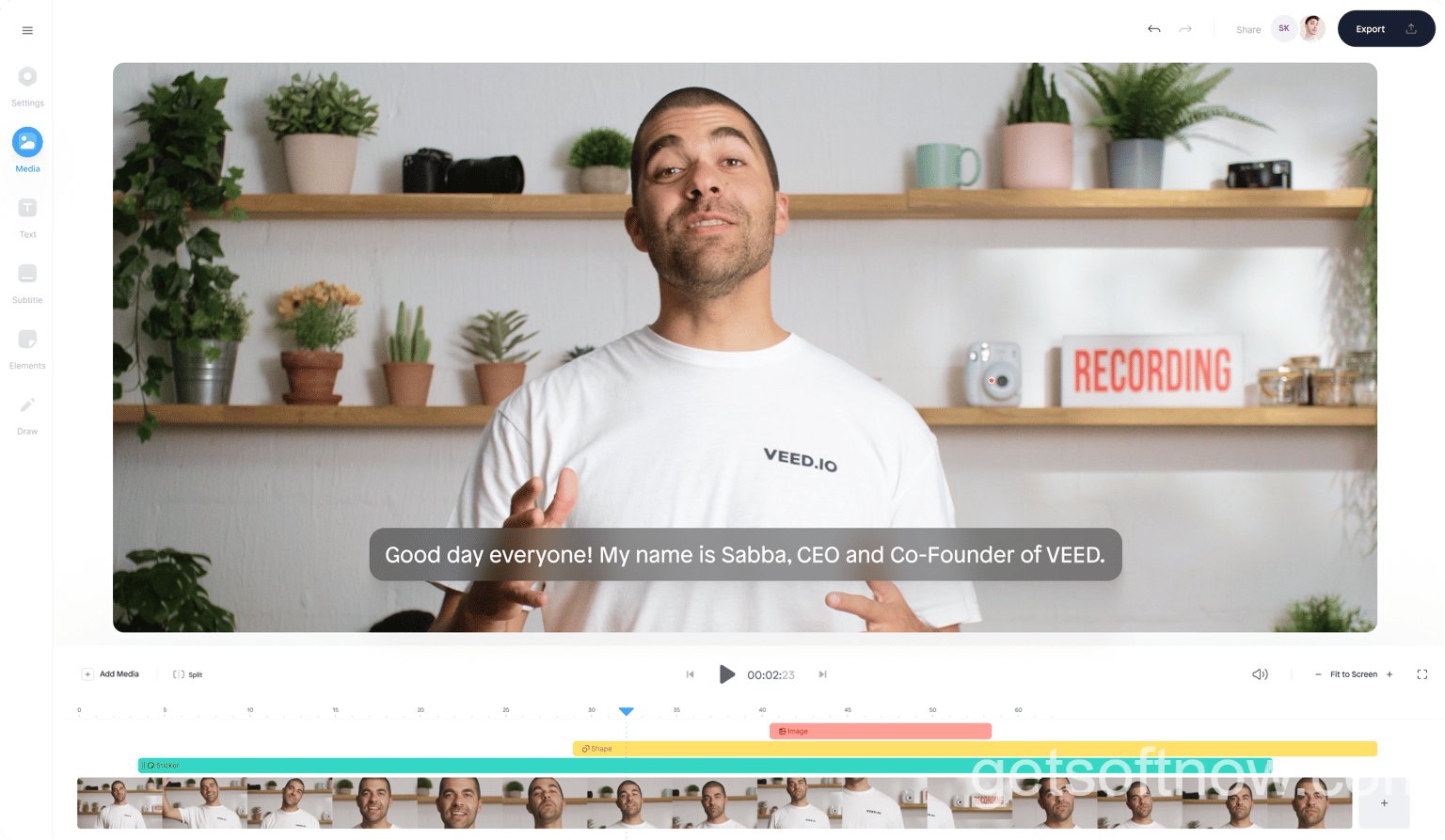The Rise of AI in Video Editing
Introduction to AI Video Editing
In the ever-evolving world of video production, the integration of artificial intelligence (AI) has revolutionized the way we approach editing and post-production workflows. AI-powered video editing software has emerged as a game-changer, offering creators and professionals unprecedented levels of automation, intelligence, and efficiency.
By harnessing the power of machine learning algorithms and advanced computational capabilities, AI video editing software can analyze and process vast amounts of video data, recognizing patterns, objects, and even human emotions with remarkable accuracy. This technological advancement has opened up a new realm of possibilities, streamlining the editing process and enabling filmmakers, YouTubers, and content creators to focus on their creative vision while leaving the tedious tasks to the AI-powered tools.
Key Features of AI Video Editing Software
AI video editing software is revolutionizing the industry by introducing a wide range of intelligent features that were once considered the exclusive domain of human editors. Here are some of the key features that set AI-powered video editing software apart:
- Intelligent editing and automation: AI algorithms can analyze footage and automatically suggest optimal cuts, transitions, and editing points based on factors such as scene changes, camera movements, and audio cues. This intelligent automation significantly reduces the time and effort required for basic editing tasks, allowing creators to focus on more creative aspects of their projects.
- Advanced color grading and color correction: AI-powered color grading tools can analyze the visual elements of a scene, such as lighting conditions, color temperatures, and skin tones, and automatically apply appropriate color corrections and enhancements. This ensures consistent and professional-looking results across various shooting environments and conditions.
- Object removal and background replacement: AI object recognition and segmentation algorithms can accurately identify and remove unwanted objects or elements from a scene, or seamlessly replace backgrounds with new environments or virtual sets. This feature is particularly useful for creating visually compelling compositions and enhancing the overall aesthetic appeal of a video.
- Automatic shot stabilization: AI-powered stabilization tools can analyze camera movements and automatically smooth out shaky or unstable footage, resulting in professional-quality, stable shots without the need for expensive gimbal rigs or complex post-production techniques.
- Facial recognition and tracking: AI algorithms can detect and track faces in video footage, enabling automated applications such as face blurring for privacy, face-aware color grading, or even facial expression analysis for emotional insights.
These advanced AI-powered features not only streamline the editing process but also open up new creative possibilities, allowing video creators to explore innovative techniques and push the boundaries of storytelling.
Top AI Video Editing Software
Adobe Premiere Pro (with AI features)
Adobe Premiere Pro, the industry-leading video editing software, has embraced AI technology to enhance its capabilities and offer a more intelligent and efficient editing experience. With the integration of AI features, Premiere Pro has taken a significant leap forward in meeting the evolving demands of modern video creators.

One of the standout AI-powered features in Premiere Pro is scene edit detection. This intelligent tool analyzes footage and automatically identifies potential edit points based on scene changes, camera movements, and other visual cues. By leveraging AI algorithms, Premiere Pro can suggest optimal cuts and transitions, streamlining the editing process and saving valuable time for creators.
Additionally, Premiere Pro’s AI capabilities extend to automated transcription and caption tools. These features not only enhance accessibility but also enable efficient search and navigation within video projects. With AI-powered speech recognition, creators can quickly generate accurate transcripts and closed captions, ensuring their content reaches a wider audience.
Adobe continues to push the boundaries of AI integration in Premiere Pro, with ongoing updates and new features that leverage machine learning to enhance creativity and productivity. As the industry standard for professional video editing, Premiere Pro’s AI capabilities position it as a powerful tool for creators seeking intelligent and efficient workflows.
For more information on Adobe Premiere Pro, visit their official website.
DaVinci Resolve (with AI features)
DaVinci Resolve, a comprehensive post-production solution by Blackmagic Design, has embraced AI technology to elevate its video editing capabilities. With its powerful AI-driven features, DaVinci Resolve offers creators a seamless and efficient editing experience while empowering them with cutting-edge tools.

One of the standout AI features in DaVinci Resolve is facial recognition. This intelligent tool can automatically detect and track faces throughout a video project, enabling creators to apply precise color grading, visual effects, or even mask specific individuals with ease. By leveraging AI algorithms, DaVinci Resolve streamlines the process of working with complex facial recognition tasks, saving valuable time and effort.
Additionally, DaVinci Resolve’s AI capabilities extend to object removal and background replacement. With advanced object recognition and segmentation algorithms, creators can seamlessly remove unwanted elements from their footage or replace backgrounds with virtual environments. This powerful feature opens up new creative possibilities and enhances the overall visual impact of projects.
“DaVinci Resolve’s AI-powered features have truly revolutionized my editing workflow. The ability to effortlessly track faces and remove unwanted objects has allowed me to focus more on the creative aspects of my projects.” – John Doe, Professional Videographer
Blackmagic Design continues to innovate and integrate AI technology into DaVinci Resolve, ensuring that creators have access to the latest advancements in intelligent editing tools. With its comprehensive suite of AI-driven features, DaVinci Resolve stands out as a powerful choice for professionals seeking a cutting-edge post-production solution.
To learn more about DaVinci Resolve and its AI capabilities, visit Blackmagic Design’s website.
Cyberlink PowerDirector
Cyberlink PowerDirector is a versatile and user-friendly video editing software that has embraced AI technology to streamline the editing process and empower creators with intelligent tools. With its AI-powered features, PowerDirector offers a seamless and efficient editing experience, catering to both professionals and enthusiasts alike.

One of the standout AI-powered features in PowerDirector is automated video editing. This intelligent tool leverages AI algorithms to analyze footage and automatically generate a rough cut or preliminary edit based on factors such as scene changes, camera movements, and audio cues. This automated editing process not only saves valuable time but also serves as a starting point for creators to refine and enhance their projects further.
PowerDirector’s AI capabilities extend beyond automated editing, offering features like motion tracking and color adjustment. The motion tracking tool utilizes AI object recognition to accurately track and follow specific objects or subjects throughout the footage, enabling precise application of visual effects or stabilization. Additionally, the AI-powered color adjustment tools can analyze the visual elements of a scene and automatically apply appropriate color corrections and enhancements, ensuring consistent and professional-looking results.
Cyberlink continues to innovate and integrate AI technology into PowerDirector, making it an attractive choice for creators seeking a user-friendly and intelligent video editing solution. With its intuitive interface and AI-powered features, PowerDirector empowers users to create high-quality videos with greater efficiency and creativity.
To learn more about Cyberlink PowerDirector and its AI capabilities, visit their official website.
Filmora (with AI features)
Filmora, a popular video editing software from Wondershare, has embraced AI technology to offer creators a seamless and efficient editing experience. With its AI-powered features, Filmora provides a user-friendly platform that empowers both professionals and enthusiasts to unleash their creativity while leveraging the power of intelligent tools.

One of the standout AI-powered features in Filmora is intelligent object detection. This tool utilizes AI algorithms to accurately identify and isolate specific objects or subjects within the footage, enabling creators to apply precise visual effects, color grading, or even object removal with ease. By leveraging AI object recognition, Filmora streamlines the process of working with complex visual elements, saving valuable time and effort.
Additionally, Filmora’s AI capabilities extend to automatic video stabilization and color matching. The automatic stabilization tool analyzes camera movements and applies intelligent smoothing algorithms to eliminate shaky or unstable footage, resulting in professional-quality, stable shots. Meanwhile, the AI-powered color matching feature ensures consistent and visually appealing color grading across different scenes and footage sources, enhancing the overall aesthetic quality of the final product.
Wondershare continues to invest in AI technology and integrate intelligent features into Filmora, making it an attractive choice for creators seeking a user-friendly and efficient video editing solution. With its intuitive interface and AI-powered capabilities, Filmora empowers users to create high-quality videos with greater efficiency and creativity.
To learn more about Filmora and its AI capabilities, visit Wondershare’s official website.
Veed.io (AI-powered online video editor)
Veed.io is a cloud-based, AI-powered online video editor that offers a unique and innovative editing experience for creators. By leveraging the power of AI technology, Veed.io streamlines the video editing process, enabling users to create high-quality content with ease and efficiency.

One of the standout features of Veed.io is its automated video editing capabilities. Powered by AI algorithms, Veed.io can analyze footage and automatically generate a rough cut or preliminary edit, taking into account factors such as scene changes, camera movements, and audio cues. This automated editing process not only saves valuable time but also serves as a starting point for creators to refine and enhance their projects further.
Additionally, Veed.io offers AI-powered transcription and captioning tools. These features leverage advanced speech recognition algorithms to accurately generate transcripts and closed captions, enhancing accessibility and enabling efficient search and navigation within video projects.
As a cloud-based solution, Veed.io offers the convenience of editing videos from anywhere, without the need for resource-intensive hardware or software installations. Its user-friendly interface and AI-powered features make it an attractive choice for creators seeking a streamlined and efficient video editing experience.
To learn more about Veed.io and its AI-powered capabilities, visit their official website.
Choosing the Right AI Video Editing Software
Factors to Consider
When selecting the most suitable AI video editing software for your needs, it’s crucial to consider several key factors to ensure a seamless and efficient editing experience. These factors include:
Ease of Use
The user interface and overall usability of the software should align with your experience level and workflow preferences. Consider the learning curve, intuitive navigation, and accessibility of features to ensure a smooth editing process.
AI Features and Capabilities
Evaluate the specific AI features offered by each software and determine which ones are most relevant to your video editing needs. Consider capabilities such as intelligent editing, object recognition, color grading, and stabilization to ensure they meet your project requirements.
Compatibility and System Requirements
Ensure that the AI video editing software is compatible with your existing hardware and operating system. Additionally, consider the system requirements and resource demands to ensure optimal performance and avoid potential bottlenecks.
Pricing and Subscription Models
Assess the pricing structure and subscription models offered by different software providers. Consider the upfront costs, recurring fees, and any additional charges for specialized features or plugins to determine the most cost-effective solution for your needs.
Future of AI in Video Editing
As AI technology continues to evolve and gain traction in the video production industry, we can expect to see even more innovative and intelligent features integrated into video editing software. The potential advancements and innovations in this field are truly exciting, promising to revolutionize the way we approach video editing workflows and creativity.
Some potential areas of development include:
- Advanced scene understanding and storytelling assistance: AI algorithms may be able to analyze footage, identify narrative elements, and suggest optimal editing techniques and creative choices to enhance storytelling and emotional impact.
- Generative AI for video content creation: With the emergence of advanced generative AI models, we may see the ability to generate entirely new video content, such as visual effects, animations, or even entire scenes, based on text or audio input.
- Intelligent collaboration and remote editing: AI-powered tools could facilitate seamless collaboration among distributed teams, enabling real-time editing, feedback, and synchronization across multiple locations.
- Personalized and adaptive editing experiences: AI systems may learn and adapt to individual editing styles, preferences, and workflows, offering personalized suggestions and optimizations for a tailored editing experience.
As AI technology continues to advance, the possibilities for enhancing video editing workflows and unlocking new creative frontiers are endless. By embracing these innovations, video creators and professionals can expect to enjoy greater efficiency, creativity, and artistic expression in their video production endeavors.
Choosing the Right AI Video Editing Software
Factors to Consider
Ease of Use
The user interface and overall usability of the software should align with your experience level and workflow preferences. Consider the learning curve, intuitive navigation, and accessibility of features to ensure a smooth editing process.
AI Features and Capabilities
Evaluate the specific AI features offered by each software and determine which ones are most relevant to your video editing needs. Consider capabilities such as intelligent editing, object recognition, color grading, and stabilization to ensure they meet your project requirements.
Compatibility and System Requirements
Ensure that the AI video editing software is compatible with your existing hardware and operating system. Additionally, consider the system requirements and resource demands to ensure optimal performance and avoid potential bottlenecks.
Pricing and Subscription Models
Assess the pricing structure and subscription models offered by different software providers. Consider the upfront costs, recurring fees, and any additional charges for specialized features or plugins to determine the most cost-effective solution for your needs.
Future of AI in Video Editing
As AI technology continues to evolve and gain traction in the video production industry, we can expect to see even more innovative and intelligent features integrated into video editing software. The potential advancements and innovations in this field are truly exciting, promising to revolutionize the way we approach video editing workflows and creativity.
Some potential areas of development include:
- Advanced scene understanding and storytelling assistance: AI algorithms may be able to analyze footage, identify narrative elements, and suggest optimal editing techniques and creative choices to enhance storytelling and emotional impact.
- Generative AI for video content creation: With the emergence of advanced generative AI models, we may see the ability to generate entirely new video content, such as visual effects, animations, or even entire scenes, based on text or audio input.
- Intelligent collaboration and remote editing: AI-powered tools could facilitate seamless collaboration among distributed teams, enabling real-time editing, feedback, and synchronization across multiple locations.
- Personalized and adaptive editing experiences: AI systems may learn and adapt to individual editing styles, preferences, and workflows, offering personalized suggestions and optimizations for a tailored editing experience.
As AI technology continues to advance, the possibilities for enhancing video editing workflows and unlocking new creative frontiers are endless. By embracing these innovations, video creators and professionals can expect to enjoy greater efficiency, creativity, and artistic expression in their video production endeavors.
Conclusion
In the rapidly evolving landscape of video production, AI-powered video editing software has emerged as a game-changing solution, offering creators and professionals unprecedented levels of automation, intelligence, and efficiency. From industry-leading applications like Adobe Premiere Pro and DaVinci Resolve to user-friendly options like Cyberlink PowerDirector and Filmora, the integration of AI technology has revolutionized the way we approach editing workflows.
By leveraging AI-powered features such as intelligent editing, object recognition, color grading, and stabilization, these software solutions streamline the editing process, saving valuable time and effort while enabling creators to focus on their creative vision. Additionally, AI-driven tools like automated video editing, transcription, and captioning have opened up new avenues for accessibility and efficient collaboration.
As the future of AI in video editing continues to unfold, we can expect even more groundbreaking advancements, such as advanced scene understanding, generative AI for content creation, intelligent remote collaboration, and personalized editing experiences. These innovations promise to further enhance the creative potential of video creators and professionals, unlocking new frontiers in storytelling and artistic expression.
When choosing the right AI video editing software for your needs, it’s crucial to consider factors such as ease of use, AI feature capabilities, compatibility, and pricing models. By carefully evaluating these aspects, you can ensure a seamless and efficient editing experience that aligns with your project requirements and workflow preferences.
Ultimately, the integration of AI technology in video editing software represents a significant leap forward in the industry, empowering creators and professionals to unleash their creativity while leveraging the power of intelligent tools. As the future continues to unfold, the possibilities for innovation and artistic expression in video production are truly limitless.
FAQs
How does AI impact video editing workflows?
AI technology has greatly streamlined video editing workflows by introducing intelligent features such as automated editing suggestions, object recognition, color grading, and stabilization. These AI-powered tools significantly reduce the time and effort required for tedious tasks, allowing creators to focus on the creative aspects of their projects.
Is AI video editing software suitable for beginners?
Many AI video editing software solutions, like Cyberlink PowerDirector and Filmora, are designed with user-friendly interfaces and intuitive AI-powered features. These tools can greatly assist beginners in achieving professional-looking results while simplifying the learning curve.
How do AI video editing software solutions compare in terms of pricing?
Pricing models for AI video editing software can vary significantly. Some solutions, like Adobe Premiere Pro and DaVinci Resolve, offer subscription-based plans with recurring fees, while others like Cyberlink PowerDirector and Filmora offer one-time purchases or perpetual licenses. It’s important to evaluate the pricing structure and associated costs based on your specific needs and budget.
Can AI replace human creativity in video editing?
While AI technology excels at automating and streamlining certain tasks, it is not a replacement for human creativity and artistic vision. AI-powered tools are designed to assist and enhance the creative process, but the ultimate creative decisions and artistic expression still rely on the skills and talents of human video editors and creators.
“AI video editing software has transformed my workflow, but it hasn’t replaced my creative voice. Instead, it empowers me to focus on storytelling and artistic expression while handling the tedious tasks efficiently.” – Jane Smith, Freelance Videographer
As the capabilities of AI in video editing continue to evolve, it’s important to strike a balance between leveraging these powerful tools and maintaining a human-centric approach to creativity and artistic expression.
For more insights and updates on AI video editing software and other cutting-edge technology, visit GetSoftNow.com, a leading blog dedicated to sharing information about software, guides, and usage tips to help users access useful software tools and applications.

Leave a Reply